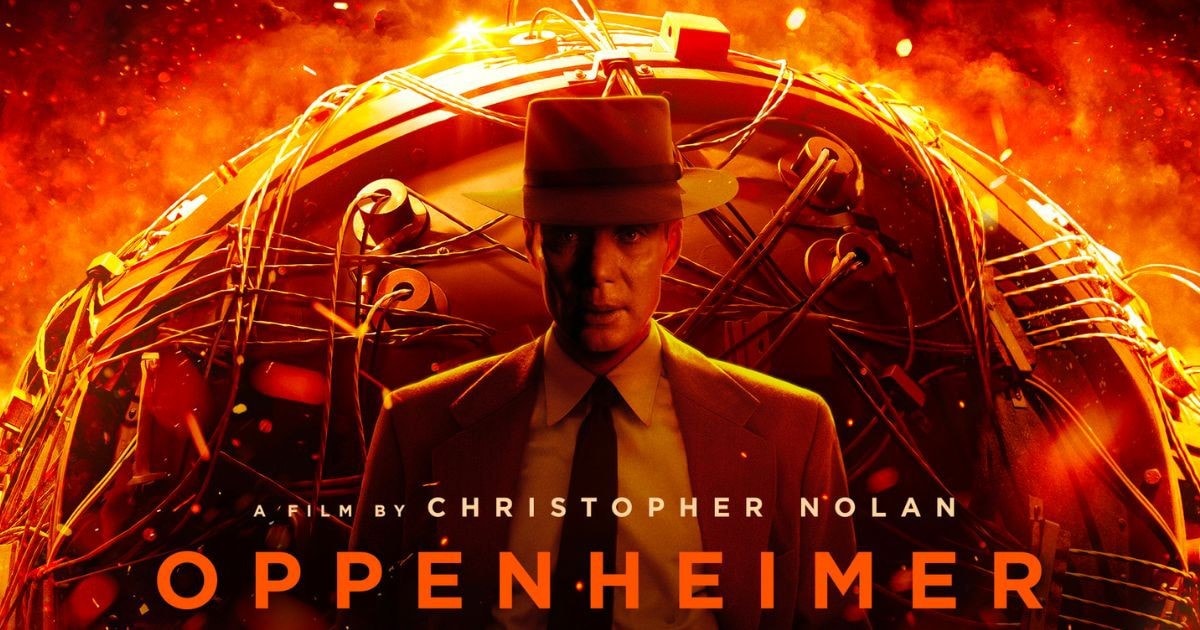Review: Christopher Nolan’s ‘Oppenheimer’ is Astonishing

Oppenheimer director Christopher Nolan is one of my favorite filmmakers. He has consistently pushed the boundaries of large-format filmmaking since shooting several sequences with IMAX cameras with The Dark Knight and is always at the forefront of crafting one-of-a-kind, towering cinematic experiences. Even his weakest movie, 2020’s Tenet, deserves praise for its insane practical action and inverted one-on-one fights. You’ll never see anything quite like it ever again because no one does it like Nolan.
It’s almost as if no other filmmaker has the patience and the skill to enthrall moviegoers in doing as much of the movie in-camera as possible, and it’s partly why he seems to be one of the few Hollywood filmmakers who never wants to repeat himself through his stories and modes of filmmaking.
The story of Oppenheimer
With Oppenheimer, Nolan crafts his magnum opus. A 180-minute long historical epic that mostly consists of people talking in both black-and-white and color about the implications of what the film’s titular character, J. Robert Oppenheimer (Cillian Murphy), is about to build (and built) with a group of some of the world’s best scientists.
Oppenheimer is approached by Leslie Groves (Matt Damon), who tells him the United States is looking to develop the atomic bomb during World War II in an attempt to get ahead of the Nazis and win the war. However, when Germany surrendered in the war, the scientists began questioning whether they should continue building the bomb. They do so, leading to the Trinity test, which was not only successful but altered the course of human history for the worse.
It seems like a simple enough biopic, but Nolan consistently alternates between the black-and-white point of view of Lewis Strauss (Robert Downey Jr.) and Oppenheimer‘s, presented in color, inside a non-linear narrative. The movie begins in 1954, during a security hearing where the United States Atomic Energy Commission (led, at that time, by Strauss) examines Oppenheimer‘s personal life and political affiliations in an era where McCarthyism ran high. From that point on, we follow Oppenheimer from his time at the University of Cambridge to the successful launch of the atomic bomb, while the Strauss storyline focuses on his specific hearing as he vies for a Cabinet position in the Eisenhower administration.
An immersive experience in IMAX
As you dive into the story, it may sound dense, and the back-and-forth between different timelines might appear jarring. But as the movie continues along, it quickly absorbs itself and rapidly immerses you in its visual and aural storytelling. Hoyte van Hoytema continues to prove his skills as a large-format photographer, deftly alternating between tight conversations in 65mm to the massive scope of IMAX through its aerial shots of Los Alamos, horseback rides, galaxy stars, and atomic explosions. Some will vilify the film’s use of IMAX as unnecessary, but Nolan is out here to prove that the format shouldn’t be exclusively reserved for massive action sequences.
Of course, the Trinity test is as jaw-dropping as you think it’s going to be. There wasn’t a sound to be heard from the audience when the bomb dropped, and the IMAX footage captured through those moments could be the best-ever use of the format. Nolan and editor Jennifer Lame pace the scene with expert timing through Ludwig Göransson‘s violin-heavy score, which always gives the right tempo (and color) to any scene, consistently creating its own rhythm through the large amounts of dialogue and expressive pauses from its protagonists.
But the IMAX format is mainly utilized to elevate the drama and give audiences unprecedented access to the characters that no other format can give you. IMAX isn’t simply a “blockbuster” large format. It can elevate them, and seeing a Marvel movie on these huge screens is especially cool. But it’s also at its best when it hones in on the characters and immerses you in its story beyond the large-scale action.
Apart from the Trinity test, Oppenheimer is a dialogue-heavy movie. Nolan and Hoytema posit the IMAX as a window into Oppenheimer‘s mind and warps it when Strauss takes over the film. It’s the first-ever movie to use IMAX black-and-white photography, with the company creating its own film strip specifically for Nolan to, once again, push the boundaries of the format. The black-and-white scenes are staggering and the most engrossing parts of the film.
Robert Downey Jr. and Cillian Murphy give career-best performances
Robert Downey Jr. gives a career-best performance as Strauss. It’s been a while since we’ve seen him act. Sure, he’ll be mostly known for playing Tony Stark/Iron Man, but let’s get real. When was the last time we saw him act beyond his known persona? It’s such an against-type performance that it could be comparable to the moment when Henry Fonda starred in Sergio Leone‘s Once Upon a Time in the West. Downey is usually known for playing the charming, ageless good guy. With Strauss, he subtly portrays the complete polar opposite of what he has always imbued on screen.
Cillian Murphy also gives the best performance of his career. It took him six movies for him to lead in a Christopher Nolan picture, but it seems the director knew exactly when he would be ready to lead his film.
Downey and Murphy are joined by the most incredible ensemble of the year (alongside Greta Gerwig‘s Barbie, both released on the same day), with Emily Blunt, Florence Pugh, Rami Malek, Matt Damon, Alden Ehrenreich, Dane DeHaan, Jason Clarke, Tony Goldwyn, Steve Coulter, Gary Oldman, Casey Affleck, Kenneth Branagh, James Remar, Benny Safdie, the list goes on. Everyone is at the top of their game, no matter how big or small their parts are.
History, science, and consequences
Safdie’s Edward Teller shares a rather gut-wrenching scene with Murphy in the wake of the Trinity test, knowing what they are putting out in the world. Oldman also impresses with his portrayal of President Harry S. Truman in the film’s most vital scene. This is where Oppenheimer finally realizes the consequences of his action and how he will truly remember himself as the man who destroyed the Earth through his harrowing discovery.
From there, Oppenheimer becomes the scariest film of the year, with its last hour alternating between the Oppenheimer and Strauss hearings, where both characters are consumed by the weight of their actions and the consequences that await them. All raw dialogue exchanges, as riveting as they are slowly horrifying. Nolan rarely uses IMAX in these moments and instead saves the format for one crucial scene with Albert Einstein (Tom Conti) that gives the entire movie its true meaning. I’ll let you discover it on your own.
Final thoughts on Christopher Nolan’s Oppenheimer
One won’t leave Oppenheimer with a sense of exhilaration but massive desperation. I had to compose myself alone in my car before driving back home. My heart was pounding extremely fast. My hands were shaking in pure shock. I hadn’t felt this devastated by a movie since seeing Lukas Dhont‘s Close. It’s a masterfully executed tale of America’s most dangerous genius, or as authors Kai Bird and Michael J. Sherwin qualified him, an “American Prometheus.”
With Oppenheimer, Nolan has crafted his best movie. We see him at the height of his screenwriting and artistic powers, giving a once-in-a-generation lesson in cinema and history. Such a triumph deserves to be witnessed on the grandest of IMAX screens.
One may never be the same after watching it, and I certainly won’t be returning to it anytime soon. But it’s such an essential piece of work that should be seen at least once in your lifetime, but definitely not paired with Barbie. Watch one. Absorb it. Go to bed. Watch the other.
My rating for this film
★★★★★ / ♥♥♥♥♥
Oppenheimer is hitting theaters now. Have you seen Oppenheimer yet? Let us know your thoughts on Twitter @mycosmiccircus or The Cosmic Circus Discord!
Review: Greta Gerwig Gives Margo Robbie an Existential Crisis for the Ages



